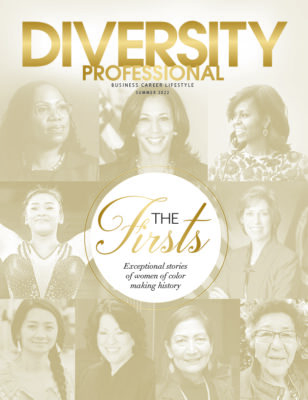C-Suite Diversity
AS EACH EXECUTIVE SETTLES INTO HIS OR HER CHAIR, READY TO SHARE IDEAS AND DEVELOP GAME-CHANGING STRATEGIES, IT IS EASY TO NOTICE SOMETHING MISSING. Typical challenges are discussed like whether their current corporate culture will support their strategic plan or how organizations can meet customers’ every changing needs. Similar to most executive meetings, a key topic is left off of the agenda.

With every initiative, they will pursue a deeper level of questioning. How does this help the organization take advantage of an opportunity? How does this solve a business related problem? How will this produce a measurable bottom line?
Much is discussed; what is often missing as part of the conversation is the value of diversity. It is missing because approximately 85 percent of executives and board members are composed of Caucasian men as reported in “Women and Minorities Are Penalized for Promoting Diversity”by Harvard Business Review.
According to “The Seven Habits of Highly Effective People” author Stephen R. Covey, “Strength lies in differences, not in similarities.” Diversity is critical for an organization’s agility and ability to innovate and match the changing face of customers. To meet the ever-changing needs of its consumers, an organization’s staff also needs to reflect its target market.
A diverse employee population not only fuels performance, positivity and possibility within an organization, but it also yields benefits that affect the bottom line in the following areas:
1. INNOVATION
A Forbes study titled “Global Diversity and Inclusion: Fostering Innovation Through a Diverse Workforce” revealed workforce diversity and inclusion to be the key drivers of business growth. Teams that have diverse backgrounds come up with more creative ideas and methods to solve problems.
2. TALENT
With the upswing in the U.S. economy, mitigating the risks and high costs of employee turnover rates are key to an organization’s growth. A survey conducted by Glassdoor, a job and recruiting site, reported two-thirds of respondents who considered diversity an important factor when assessing companies and job offers.
3. RETAIN EMPLOYEES
Glassdoor’s survey also indicated 57 percent of those surveyed believe their company should be more involved in increasing workforce diversity.
4. INCREASE STAKEHOLDER RETURNS
Companies with diverse executive boards enjoy higher earnings and returns on equity as stated in “Is there a payoff from top-team diversity?”, an article from McKinsey & Company, a global management consulting firm.
5. INCREASE MARKET SHARE
Building a diverse workplace allows you to effectively market to a wider range of consumers. Harvard Business Review addressed how a diverse staff can better understand and meet the needs of underserved markets in “How Diversity Can Drive Innovation.”
6. SECURE MILLENNIALS
With the majority of baby boomers soon to retire, the 2015 Millennial Majority Workforce study commissioned by Elance-oDesk, an online workplace platform, and Millennial Branding, a full service personal branding agency, cited millennials as the majority generation. Six of 10 millennials alluded to “a sense of purpose” as the reason why they selected their current employer; more value is placed on an organization’s impact to society over their Friday paycheck.
The success of business does not fall on the backs of the inclusion officer or on human resources; it is driven by the vision and commitment of the executive leadership team.
Diverse thinking is a business imperative that starts at the top.
The real question is, how can we affect change if women and minorities are not represented in the C-Suite?
Despite the current emphasis on management level diversity, minorities and females are significantly underrepresented in the C-Suite. In 2014, Fortune magazine reported that just over 4 percent of Fortune 500 CEOs at that time were female, whereas minorities, a classification including African-Americans, Asians-Americans and Latin-Americans, totaled less than 2 percent. We only added one woman CEO in 2015, still representing only 4.8 percent of the Fortune 500 companies. (Catalyst. Women CEOs of the S&P 500. New York: Catalyst, February 1, 2016.)
We could talk about how to groom women and minorities for a career in the C-Suite. I agree that conversation and those commitments are important, but why wait?
Strength lies in differences, not in similarities.
Let’s add what is missing to the executive retreats, summits and board room meetings that are happening today.
Pull up a few more chairs around the table, and invite employees, customers and stakeholders to join the conversation. Learning about diversity increases knowledge of differences, creates self-awareness and builds cultural intelligence. Experiencing the richness of diversity in its human form is what will create an impact on the executive board.

85 %OF EXECUTIVES AND BOARD MEMBERS ARE COMPOSED OF CAUCASIAN MEN









